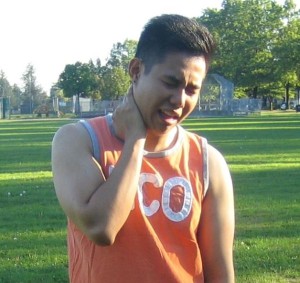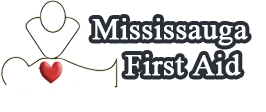The sternocleidomastoid muscle basically starts on the breastbone and connects to the collarbone and temporal bone at the rear part of the skull. On every side of the neck, there is one sternocleidomastoid muscle. It is important to note that these muscles can tilt and rotate the head to the left and right. Abrupt movements such as during whiplash can cause damage to the sternocleidomastoid muscle. This typically occurs during vehicular accidents in which the head of the individual is moved abruptly during the collision.
Functional symptoms
The individual will experience dull pain along the path of injury that is accompanied by sharp pain upon turning or tilting the head. Muscle fatigue, stiffness and difficulty holding the head upright can also occur. The individual might be required to use a neck brace to support the weight of the head as well as temporarily relieving the stress on the sternocleidomastoid muscle. In most cases, over-the-counter non-steroidal anti-inflammatory drugs (NSAIDs) such as naproxen and ibuprofen can help relieve the pain connected with the strain.

Muscular symptoms
If the sternocleidomastoid muscle is strained, it can cause redness and swelling along the muscle at the site of injury. As for severe cases, the individual will also notice bruising along the path of the injury. Once the strain results to muscle spasm, there is also twitching or fluttering under the surface of the skin along the side of the neck. As a first aid measure, you can apply ice for 20 minutes several times in a day to help relieve the redness and swelling. If you want to learn how to properly use ice on similar injuries, click here.
Systemic symptoms
A sternocleidomastoid muscle strain can trigger headaches, particularly at the attachment point of the muscle at the base of the skull. Other symptoms that can occur include ringing in the ears, head or facial pain, blurry vision and dizziness. Both the stiffness and pain can interfere with sleep which can make the individual tired, irritable as well as suffer from concentration difficulties and memory problems. This would require the application of a neck brace while the individual sleeps. Another alternative is to encourage the individual to sleep on his/her back with a rolled towel beneath the neck in order to support the natural curve at the base of the skull.
When to consult a doctor
It is important to consult a doctor if the individual experiences numbness, pain or tingling that radiates down on one or both arms as well as muscle weakness in the arms or shoulders. Even though it can be difficult to move the head, you have to consult a doctor if the individual could not move his/her head at all or if the pain worsens. Physical therapy can help minimize the symptoms that are triggered by the sternocleidomastoid strain.
